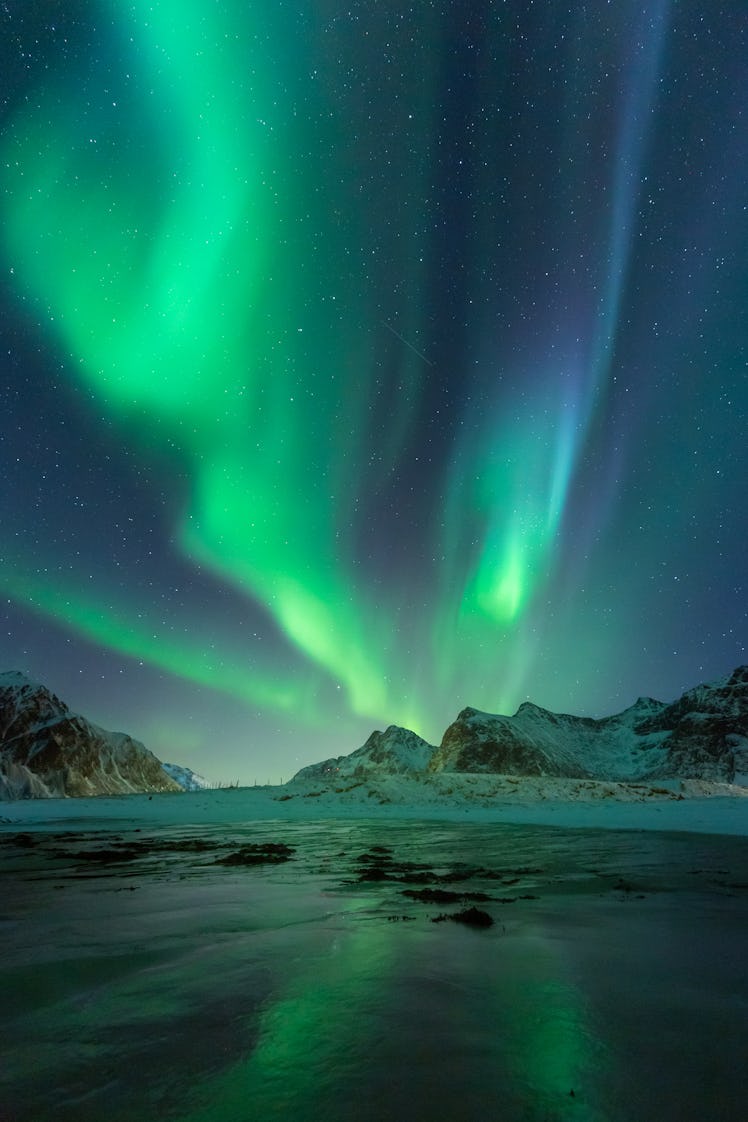How To Catch A Rare Glimpse Of The Aurora Borealis Right Now
All the stars are aligning, figuratively, for a rare summer viewing.

There’s a chance we’re in luck for a beautiful summer show of the aurora borealis. Sheer geographical limits usually make it practically impossible to see the dazzling lights brought by the aurora borealis, a spectacular light display that typically sticks around Canada and the North Pole.
However, for North Americans who live a bit further south than the Canadian border, this week there’s something extra happening in the sky, and the benefit is a rare summer look at the polar lights.
What’s happening with the aurora borealis?
The National Oceanic and Atmospheric Administration’s Space Weather Prediction Center (NOAA) issued a warning about a “geomagnetic storm” that will “see the greatest effects” on Aug. 18, but it will continue through Aug. 19, per the New York Post.
Experts predict the solar storm to reach a level G3, considered strong on NOAA’s storm scale. While that sounds intimidating — because, honestly, what’s a solar storm? — the storms aren’t generally something we have to worry about.
“If you’re an astronaut, you have to pay attention, and if you are an airline crew, that does a whole lot of polar routes. In terms of actual like radiation effects for the general public, there are very few,” Dr. Laurel Rachmeler, the head of the solar and terrestrial physics section of NOAA’s National Centers for Environmental Information said, per New York Post.
The solar storm began on Aug. 14. The experts say the storm includes a “series of Coronal Mass Ejections (CME),” As that gets closer to the Earth, it is strong enough to bring the aurora borealis further south than we typically see. And the dazzling show might be viewable even through the summer night sky.
When and where can I see the aurora borealis?
The best times to view the aurora borealis, according to New York Post, are between 11 p.m. and 4 a.m. on Aug. 18 (which you have probably missed). But! There is a chance you can see it on Aug. 19 as well, though it’s not as likely. So the potential is highest during these times, but of course, it’s essential to remember that stars do their own thing, so seeing them isn’t guaranteed.
Major cities are in the potential viewing zones include New York, Milwaukee, Green Bay, Detroit, Seattle, and Minneapolis. However, given the strength of the projected storm, there’s a possibility of seeing the aurora borealis in many more states, including Oregon, Idaho, Washington, Montana, North and South Dakota, Nebraska, Iowa, Indiana, and more.
The biggest tip to seeing the aurora borealis is simple. The further north you are, the better the chances. Enjoy!